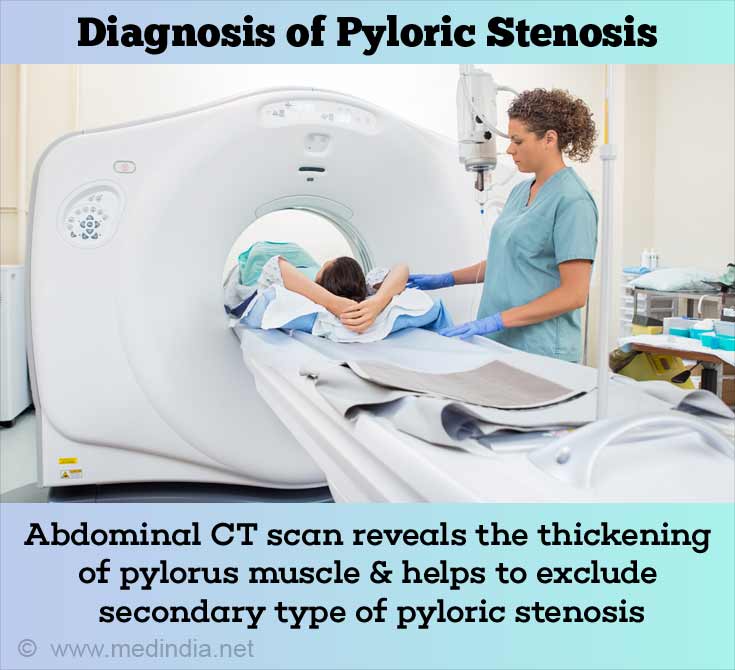- Pyloric Stenosis - An Overview - (https://en.wikipedia.org/wiki/Pyloric_stenosis)
Diagnosis of Pyloric Stenosis in Adults
Pyloric stenosis is diagnosed based on the complete patient history, physical examination and various tests.
Pyloric stenosis may be asymptomatic and become symptomatic in later life when the patient is exposed to certain predisposing factors. Tests that can be used in the diagnosis of pyloric stenosis include:
- Blood tests: A complete blood profile helps to detect biochemical and electrolyte changes and may give a clue to the diagnosis.
- Imaging studies: Imaging studies that are useful in the diagnosis of pyloric stenosis are:
- Abdominal X-ray
- Abdominal ultrasonography
- Gastrointestinal barium swallow study (UGI series): Upper gastrointestinal series (UGI) reveals distended stomach and delayed gastric emptying time due to pyloric stenosis. The pyloric canal appears elongated and narrow. A mushroom-like deformity may be noted in the pyloric region.
- Abdominal CT scan: Reveals the thickening of pylorus muscle and helps to exclude secondary type of pyloric stenosis.

- Gastrointestinal endoscopy: Endoscopy is used to detect the gastrointestinal obstruction and rule out other causes of gastric outlet obstruction.

- Biopsy: A biopsy may be taken during endoscopy to differentiate between the gastric cancer and pyloric stenosis.(4✔ ✔Trusted Source
Pyloric Stenosis - An Overview
Go to source)








